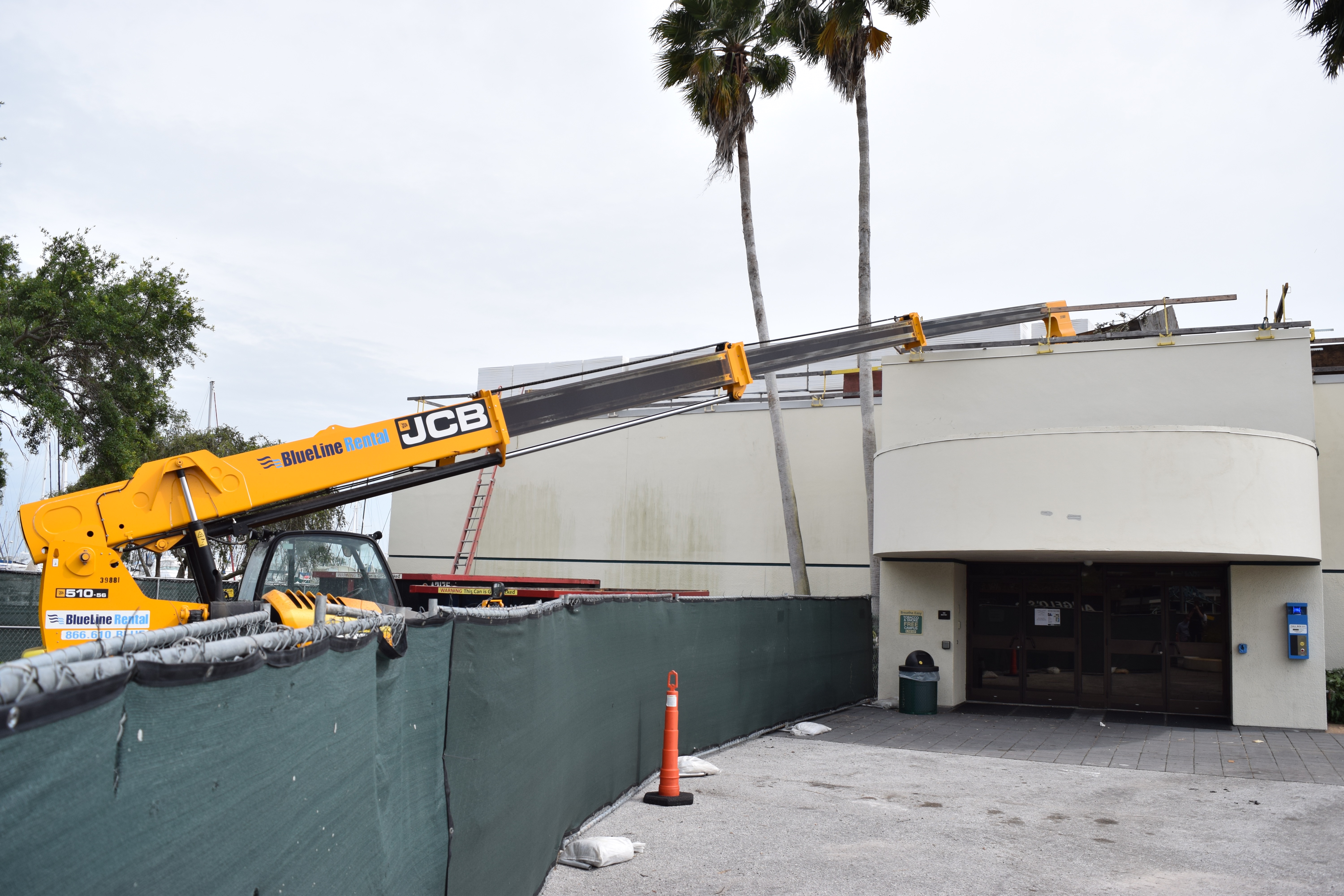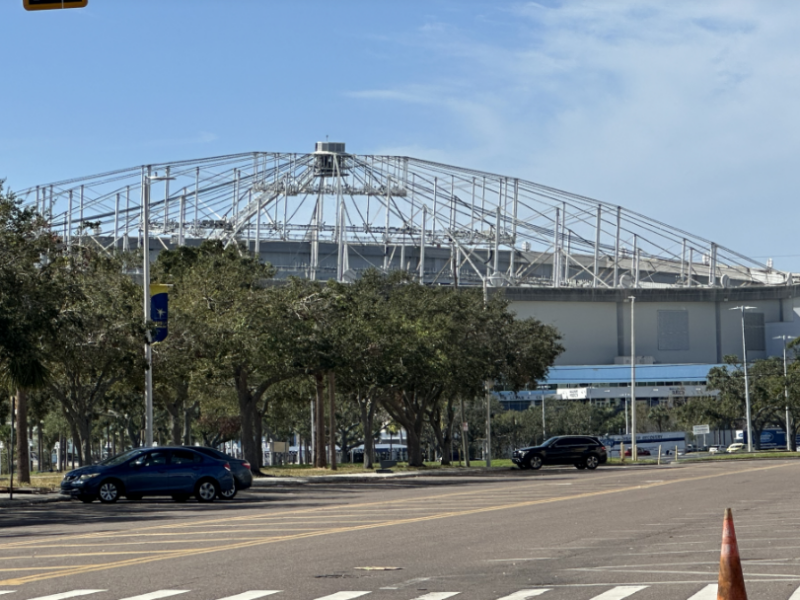Above photo: Since spring break, construction has been underway on Harbor Hall. In addition to updating the chilled water units, the building’s roof is being fully replaced — a process that hasn’t happened since the building was the former Dali Museum. Jonah Hinebaugh | The Crow’s Nest
By Luke Cross
Across Poynter Park, separated from the rest of campus, Harbor Hall has been occupied with more construction workers than art students.
Construction on Harbor Hall began during spring break, prompted by a ceiling leak in the north side of the building.
“Whenever we had a heavy storm or lots of rain, ceiling tiles would get soaked through and drip into the classrooms. It was the push to start the whole renovation,” said Edward Lewis, the construction project manager.
When surveying the building before beginning work, Facilities Planning and Construction discovered the severity of the issue.
While taking a core sample of the roofing, Lewis discovered that Harbor Hall’s roof was laid on top of three older roofs.
According to Lewis, it was a common practice to layer roofing in the past, but the age of the roof and the number of layers poses a safety hazard. Modern building code only allows two layers of roofing to be laid before it must be stripped and replaced, he said — any more would be hazardous during hurricane conditions.
“I have no records, but looking at the materials used, it’s around 10 to 15 years old,” said Lewis. “The layer on the bottom is the original roof, so it’s been there since the building was constructed.”
Given the roof’s age, the construction site took measures to prevent occupational hazards, like fumes and dust.
The core sample was tested for carcinogens, of which none were found, and the workers regularly spray down their worksite to prevent dust from spreading. A membrane within the building’s ceiling also prevents any dust from falling inside Harbor Hall.
Harbor Hall once served as the original Salvador Dali Museum, which was last refurbished in 1982.
The construction will also update the building’s chilled water units, which run on a system separate from the rest of campus. Two of the rooftop units were untouched in the building’s 2014 renovation.
“The machines are nearing the end of their lives, so replacing them will cut down the noise and improve energy efficiency for the entire building,” said Lewis.
The construction process involves two shifts of workers: The first typically works from 4 to 9 a.m. stripping the old roofing, and the second patches the gaps later in the day.
“This way students can avoid the brunt of the noise, the workers get a much cooler environment and the project’s time scale is minimized,” said Lewis.
The construction must operate around staff and faculty as well. Facilities Planning and Construction has been working with the affected professors to work around class times.
“We regularly sit down with staff and faculty and run through a program to cut down on the amount of interruption in certain parts of the building,” said Lewis. “This week’s meeting will be talking about exam times and how we can be mindful of that.”
A handful of classrooms in the east side of Harbor Hall regularly used by the Verbal & Visual Arts department have been temporarily evacuated for both noise and safety concerns. The classes have been relocated to the Davis building in the meantime.
“It’s a pain in the butt, and having classes across campus reminds me how great it is for english faculty to normally have classrooms and offices together – we can just pop over and grab a book of something if we forget it,” said Thomas Hallock, an English professor.
The exterior of the east side of Harbor Hall has also been cordoned off as an area to catch and collect any debris that may fall from the stripping process. Every other entrance will follow its normal schedule until construction moves to the building’s west side, which will then be blocked off.
Residences around campus have also been made aware of the construction and are being notified of work times.
“We asked them to notify the neighbors about the sound and obstructions, and everything has gone well,” said Guy Van Asten, safety and compliance officer.
Van Asten regularly checks the site to ensure that barriers and signage are maintained and that the work follows safety guidelines.
“If someone is curious about something that seems off, ask the question. It’s better to be informed – misinformation is worse for everybody,” said Van Asten.
Construction is set to be completed by the first week of May, provided exam time goes smoothly. The time frame is exacerbated by both the scale of the project and the extent of safety measures taken by the crew.
“Before we touch anything we test and evaluate for risks and plan around that,” said Lewis. “I know its sounds cliche, but the students are my customers. I manage the buildings around them and be as respectful and aware of everyone’s situation as possible.”



